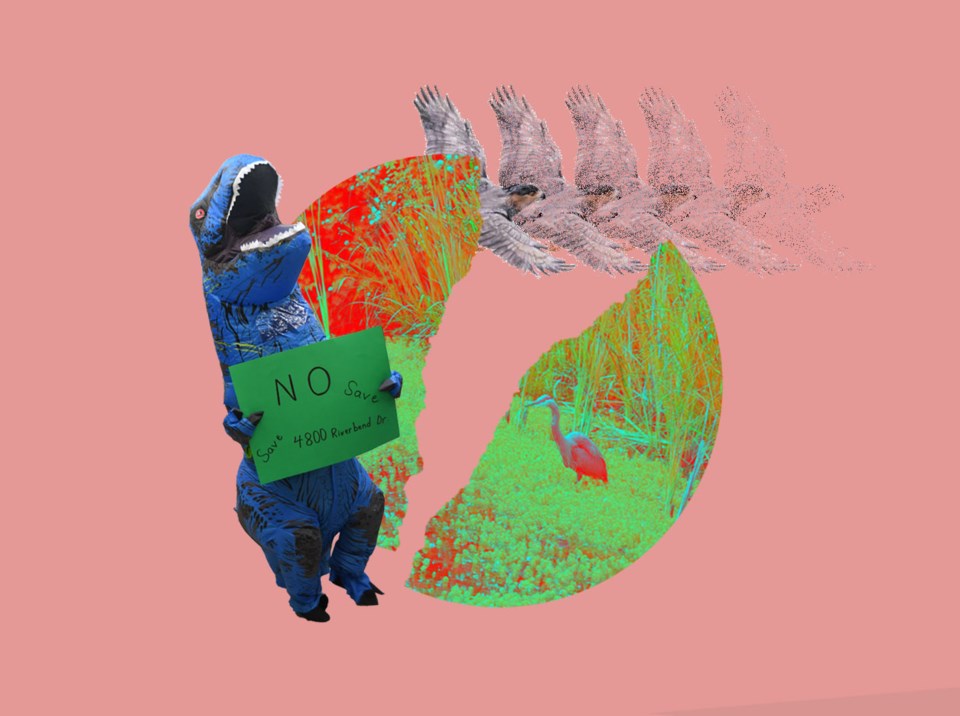One year ago today, the future of 20 acres of verdant wetlands was decided in the fluorescent beige council chambers of Burnaby City Hall.
Protesters packed the gallery on March 20, 2023, exchanging pamphlets: “STOP Burnaby city council from destroying 21 acres of Fraser Foreshore Park.”
Stop them, they did.
Moments later, in a unanimous vote, council pulled the plug on a project it had approved six weeks earlier – “GRO,” short for Green Recycling and Organics, a compost processing facility that would have wiped out vital wetlands at the park in Burnaby’s Big Bend area.
Before killing the project, Coun. Alison Gu thanked residents for fighting to save the “life-supporting richness” of Fraser Foreshore.
So how did council get so close to paving over those “life-supporting” wetlands?
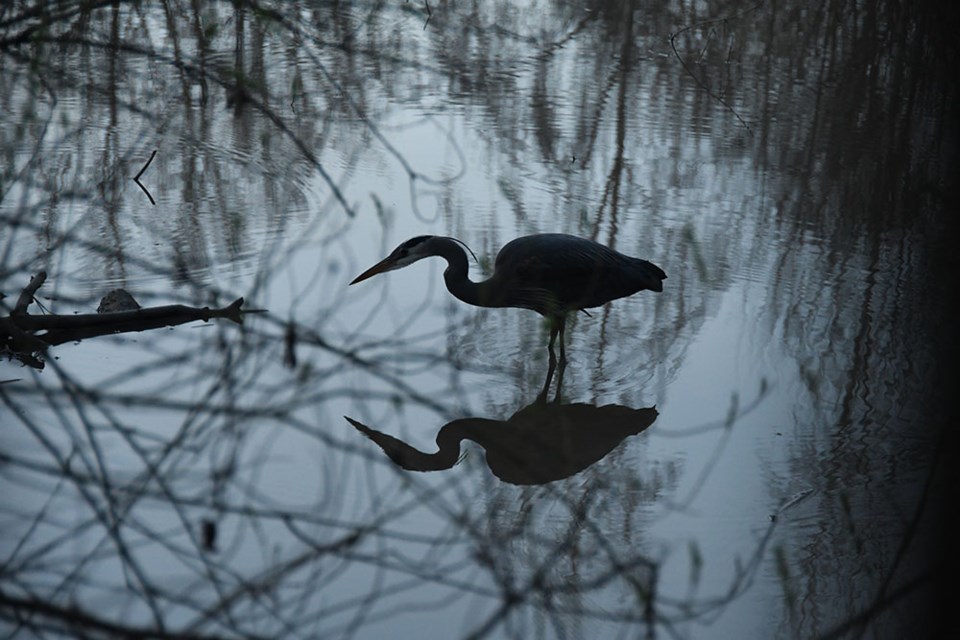
Documents obtained by the Burnaby NOW under the Freedom of Information Act suggest senior city staff withheld concerns about the environmental significance of the Fraser Foreshore site from reports to council.
According to the documents, which include more than 1,200 pages of emails and reports, an internal advisory committee initially recommended against the project due to the environmental sensitivity of Fraser Foreshore Park.
Originally requested by former city councillor Colleen Jordan, the documents indicate the committee’s decision was quietly reversed after input from senior management and replaced with a recommendation to support the project.
Later reports to council focused on the city’s measures to make up for removing the wetlands but left out multiple “red flags” raised by the committee.
Why build GRO at Fraser Foreshore?
When GRO was presented to council and the public in February 2023, the Fraser Foreshore Park location was deemed the only site that met the requirements for a compost facility in Burnaby: a large area away from people’s homes.
That February, Mayor Mike Hurley told the NOW if GRO wasn’t built at Fraser Foreshore, it wasn’t going to happen.
The state-of-the-art, $182-million facility would have processed up to 150,000 tonnes of food scraps and yard trimmings.
Compost from Burnaby would make up one-third of that capacity, currently trucked to Delta, and the city would sell the other two-thirds to process the waste from neighbouring cities and businesses.
The project was supposed to reduce the equivalent of 14,000 tonnes of carbon emissions annually, equal to taking 3,000 cars off the road.
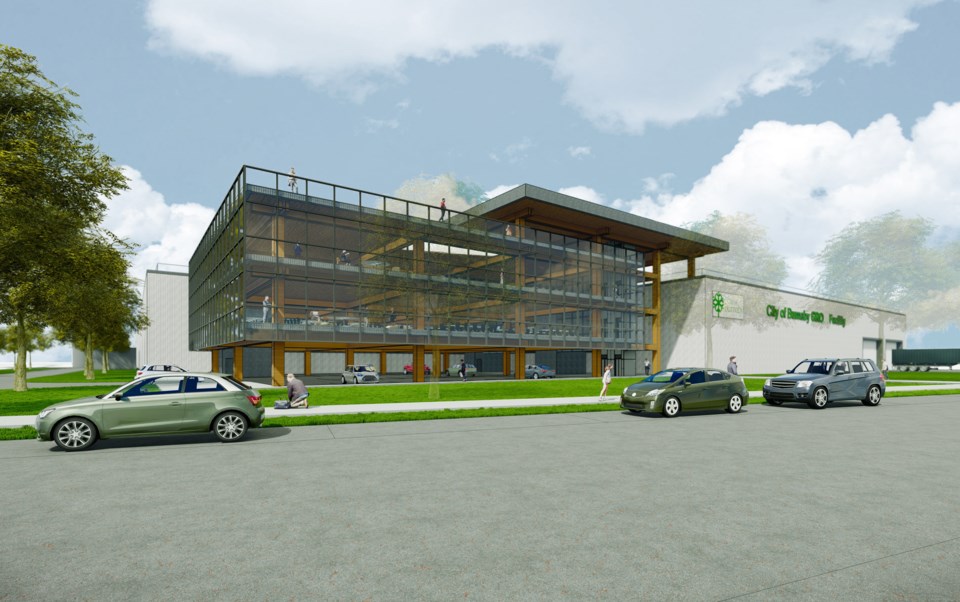
The city estimated GRO would generate roughly $1.8 million in revenue per year; and the city could save the $3.67 million it spends annually on compost processing.
The proposed site at 4800 Riverbend Dr. had the added benefit of being right next door to both Metro Vancouver’s Waste-to-Energy Facility, an incinerator, and the city’s planned District Energy Utility that will eventually use the incinerator’s waste energy to power homes throughout South Burnaby.
The city said the area would become a “Green Energy Centre” and a convenient industrial campus for garbage trucks to come and go.
While admitting the GRO project would pave over more than 20 acres of wetland habitat at Fraser Foreshore (about half the size of Metrotown mall), the city said it would offset the loss with the biggest environmental compensation package in its history.
‘We should not be in a rush to advance’
But some city staff were concerned from the outset that the parkland played a significant role in the city’s ecology.
In May and June 2021, when Fraser Foreshore was named as a possible site for GRO, environmental planner Mark Sloat immediately urged caution to senior planners.
He said it was an environmentally sensitive area of regional importance.
“I advised we should not be in a rush to advance without retaining a consultant,” he told Lee-Ann Garnett, deputy general manager of planning, via email on June 4, 2021.
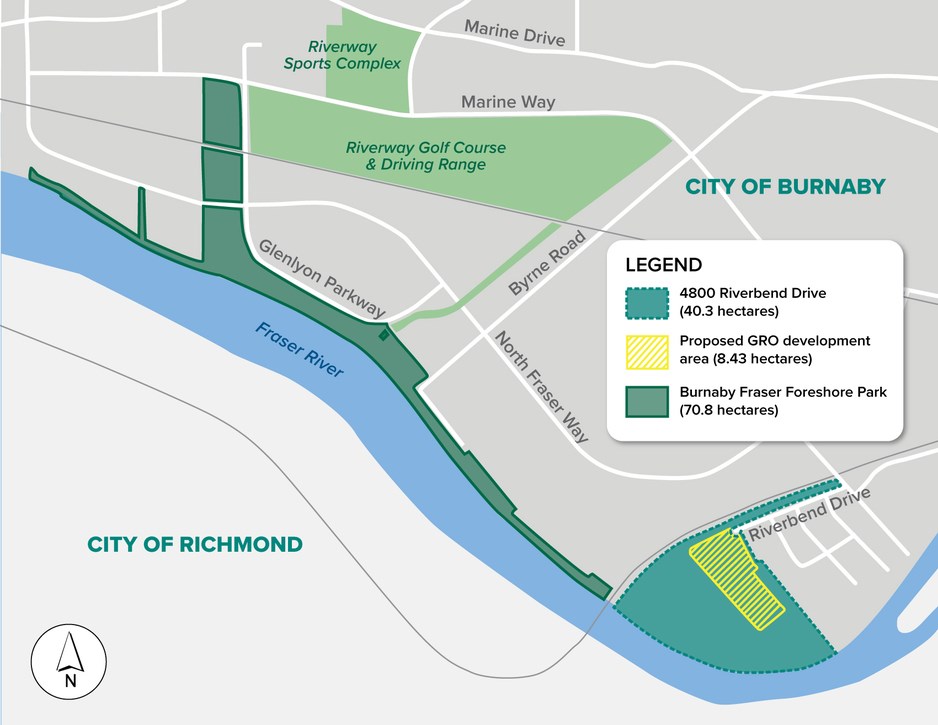
The wetlands of Fraser Foreshore Park are connected to streams – and Burnaby has strict regulations around streamside development.
That’s where the city’s Environmental Review Committee comes in.
Made up of six staff representatives from engineering, climate action and energy, parks, and planning, the committee’s role is to weigh the merits of development against environmental protection in sensitive areas.
In February 2022, the committee received an application from the engineering department to have streamside protection rules relaxed for GRO at Fraser Foreshore Park.
When the committee’s parks representative Alekxos Sarter learned of the plan, she was appalled.
“I’m extremely shocked that this project has advanced to this stage,” Sarter wrote to Sloat, the environmental planner, Feb. 11.
“I had no idea of the type of facility and the size of it.”
She asked who initiated the proposal.
“Did they not realize this is dedicated parkland and is considered ecologically sensitive conservation land within our city park system?”
She attached various reports detailing the park’s value and emphasized the city had explicitly bought the land to create a core nature park for conservation.
(The city acquired the site as part of a 42.4-acre parcel for $5.28 million in 2004 from Crown corporation Canada Lands Co.)
Sarter noted if council wanted to change the land use for the park, it would have to seek voter approval.
“This will certainly be an interesting (Environmental Review Committee) meeting,” she said.
‘Red-flags’: Committee says find somewhere else
At the meeting, the committee raised major concerns about the proposal and initially advised against the project, according to meeting minutes.
The committee said it found “red-flags” with the project, highlighting the loss of wetlands and valuable floodplain, and recommended the city should find a less sensitive location.
The committee said the development wasn’t suited for the site, noting the area is one of the last remaining naturalized areas within the floodplain of the lower Fraser River valley.
Building the industrial facility would fragment the park and make the nearby land “less resilient” and disrupt the habitats, according to the minutes.
The committee also said the proposed project seemed “constrained” and suggested the compost facility might eventually have to expand further into the park, further impacting the river and wildlife habitat.
While it might have been a “nice to have” to locate GRO right beside the planned District Energy Utility, the committee said, the two facilities would not be operationally linked and the GRO project could be located elsewhere.
“There is sufficient information, without further ecological assessment, to recommend that this rezoning application not be advanced because of the environmental sensitivity of the lands,” said a decision from the committee on March 8, 2022.
‘Higher level discussion’ leads to revisions
But the committee’s concerns never made it into the report that went to council in February 2023.
Instead, the committee’s decision was overturned.
It is unclear what led to this reversal, though emails refer to discussions between Sloat and Johannes Schumann, director of development and urban design, agreeing to “take this forward for higher level discussion,” according to a March 11, 2022 email.
The Environmental Review Committee’s decisions are typically sent directly to the general manager of planning and development, in this case, Ed Kozak.
Instead, the GRO decision was discussed with multiple senior staff in the planning department, including Kozak and Garnett.
Three months after the first decision was finalized, Sloat sent out a new Environmental Review Committee decision June 9, 2022.
The ‘narrowed’ decision
In the new decision, the committee almost completely reversed its recommendations.
Sloat told Kozak, Garnett, Schumann, James Lota (general manager of engineering at the time) and Erik Schmidt (director of solid works and recycling in the engineering department) the revised decision removed the committee’s “questions and issues” about the site and its ecological context.
He said the “issues” would be moved into a memo to Schumann’s division for consideration during rezoning.
The revised June 2022 decision omitted the environmental concerns and was “narrowed” to focus on the mitigation and compensation measures the city would undertake to make up for the loss of wetlands.
The revised decision deleted a full page of concerns found in the original, including details about the site’s ecologically significant ecosystems and the sensitivity of the Fraser River floodplain, as well as the fact the environmental sensitivity of the lands was the primary reason they had been dedicated as parkland.
The committee no longer recommended selecting a less sensitive site.
Instead, it recommended proceeding with more ecological studies, developing the compensation strategy in more detail and planning for sustainable building materials (like rain gardens and green roofs).
After the Environmental Review Committee gave its revised decision, Sloat said no further submission to that committee was needed.
Parks staff would later note they had little input on the project, according to the emails.
“Other than being consulted on the restoration for the project, (the parks, recreation and culture department) really doesn't have any info,” Melinda Yong, an environmental planner in the parks department, said in an email Feb. 10, 2023.
As for that streamside protection relaxation the engineering department had asked for back in February 2022?
It was deemed “unnecessary” since the streams were being “completely removed,” Sloat said in a Sept. 16, 2022 email.
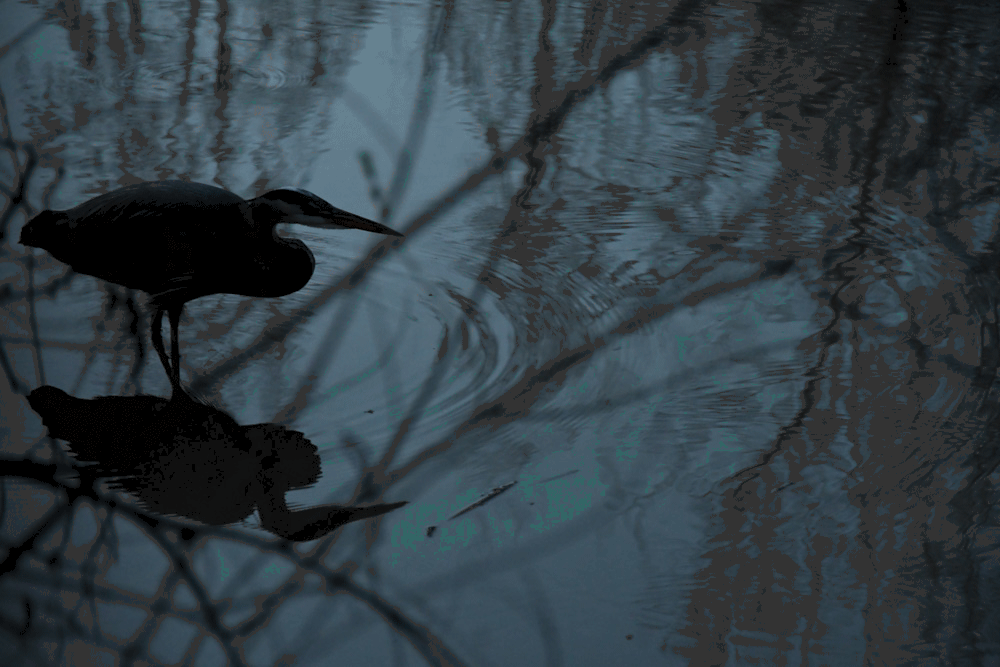
‘Disturbed’ land or ‘mosaic of unique habitats’?
There are stark differences between the public report on GRO presented to council Feb. 6, 2023 and the information found in the hundreds of pages of reports circulated by staff internally in the two years before the project came forward.
Lands and facilities staff downplayed the ecological significance of the land that would be lost in the council report.
The report submitted to council by James Lota, now the general manager of lands and facilities, acknowledged GRO would mean losing marsh, forest floodplain and swamp wetlands but said the area was not used for recreational purposes.
The report described Fraser Foreshore as having “low-quality fish habitat,” “several artificially channelized waterways” and noted the site was “previously disturbed when it was cleared, ditched, and farmed between approximately 1930 and 1965.”
Meanwhile, reports exchanged by staff behind the scenes depicted the Fraser Foreshore wetlands as a haven for fish, birds and other wildlife.
Informational graphics described the park as an ecological reserve with scarce, newly restored habitat.
The site proposed for the GRO project is home to a permanent, fish-bearing stream called Sturgeon Slough and a mature cottonwood forest.
A salmonid rearing channel was built there 30 years ago, providing juvenile salmon with protected waters for rearing, according to the documents.
The Environmental Review Committee concluded the wetlands at Fraser Foreshore created a “mosaic of unique habitats and ecosystems.”
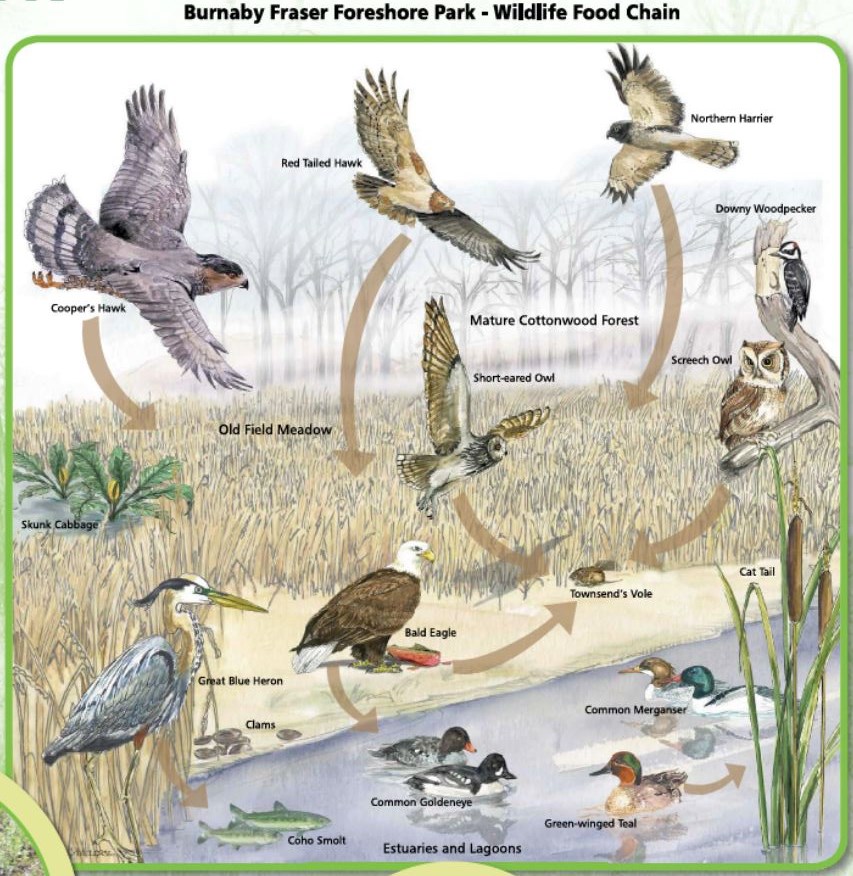
Burnaby’s bargain: How to pay for wetland loss?
When asked why the committee's concerns about GRO were not included in reports to council, city spokesperson Chris Bryan said the Environmental Review Committee is a staff working group, not a formal city committee, and does not report to council.
“Its role for this project was to outline potential impacts and recommend how to mitigate and/or compensate for those impacts,” Bryan said in an emailed statement.
He said the committee’s review was one of several inputs that informed the staff report to council.
After the Environmental Review Committee’s decision was revised in June 2022, city planning and engineering staff spent more than six months developing the compensation package with environmental consultant GHD.
The city planned to make up for the permanent loss of the wetland habitats by restoring and enhancing similar habitats elsewhere in the city and other spots at Fraser Foreshore.
The final program would have seen a three-to-one habitat gain-to-loss ratio, which the city hailed as the “largest program package of environmental enhancement the city has ever undertaken.”
Sloat said the enhancement would be 10 times the next largest project in Burnaby and could cost between $8 million and $30 million.
In an internal memo, however, he also said, that even with the mitigation and compensation measures, the project wouldn’t fully align with various city environmental policies (including its Climate Action Framework and Environmental Sustainability Strategy) or Metro Vancouver’s Regional Growth Strategy because of the potential for permanently losing the unique, regionally significant ecosystem.
As of October 2023, the city had spent almost $1.7 million on consultants for the project.
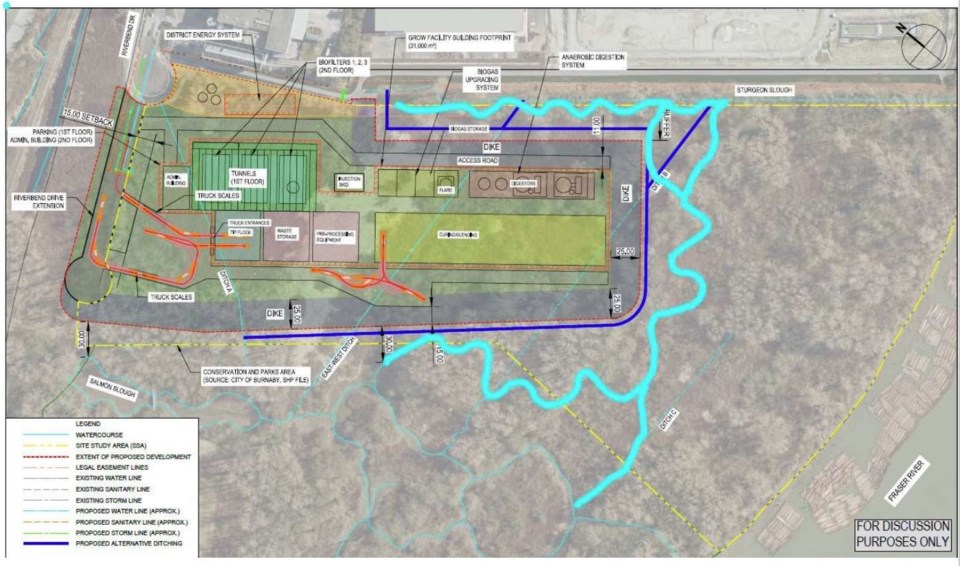
Who’s idea was this whole GRO thing?
Burnaby began collecting food scraps as organic waste in 2010.
The program proved popular among residents and increasing uptake meant increasing costs.
In 2019, Burnaby approved a five-year contract for green waste processing worth $16 million, almost triple the annual amount the city paid for composting five years earlier.
Mayor Hurley, who had been elected as an independent a year earlier, had an idea.
Hurley formally requested staff in October 2019 to study whether Burnaby could build its own composting plant in town.
But Coun. Jordan immediately raised concerns.
A longtime councillor with the Burnaby Citizens Association at the time, Jordan said the city had already studied an in-house green-waste plant and found there were no good spots to locate a facility that could handle the volume of Burnaby’s waste.
(Staff also deemed it too expensive to buy industrial land in Burnaby, according to a 2012 report. City-owned land wasn’t floated as an option at that time.)
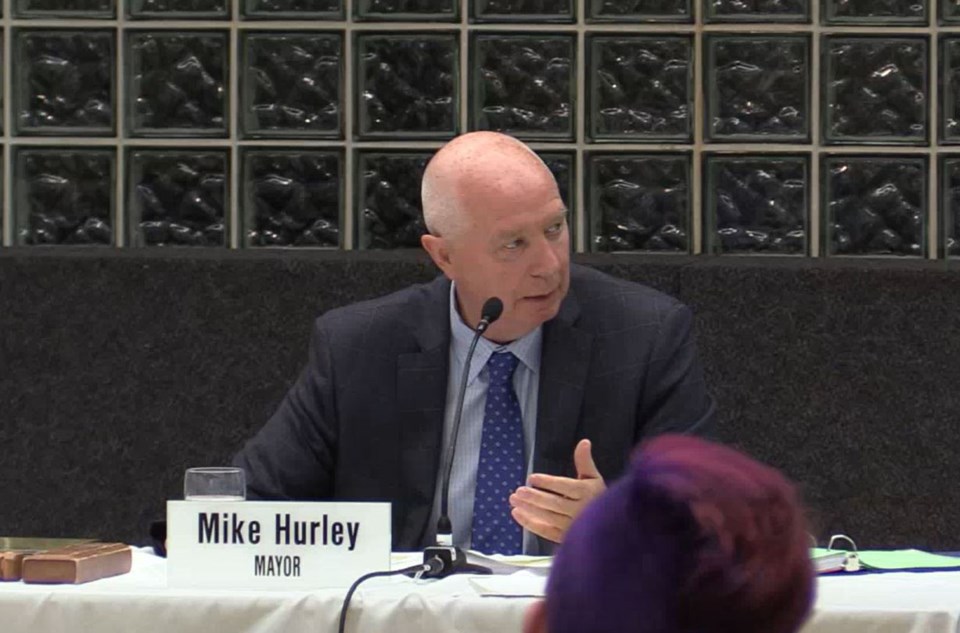
Still, Hurley said the costs had risen so dramatically he thought the city should take another look.
“Certainly, it won’t be easy to find something in Burnaby,” Hurley said at the 2019 meeting. “But I think, in fairness, we have to have a real look, because we might not have anywhere to take (green waste) … if things carry on the way they’re going.”
Jordan implied the only available location was parkland.
“You know how people feel about cutting trees down in Burnaby, so I wouldn’t want to push anywhere near that,” she said.
GRO goes public
When GRO was approved in principle Feb. 6, 2023, councillors heaped praise on the project.
Burnaby Citizens Association Coun. Gu thanked staff for their work on the project, including reports from which she learned there had been previous “industrial disturbance” to the site.
“I think it’s really important that we don’t just protect the lowest value of land … We actually look at where it is valuable to have parkland and then do everything we can to enhance that,” Gu said.
In a press release, Hurley said GRO was “an important step” towards Burnaby becoming a carbon-neutral city.
A couple of councillors warned there might be resistance to the plan.
Coun. Pietro Calendino suggested residents might be unhappy at the loss of 21 acres of “some sensitive park area and wetlands.”
“There may be some pushback from the community, so I just recommend that we do a very strong messaging and communication plan to ensure that people are aware of the benefits of doing (it),” Calendino said.
Residents shocked by GRO
The pushback was swift and unrelenting.
Residents began a letter-writing campaign deluging the Burnaby NOW, city councillors and staff with emails and letters condemning the project.
Opponents decried the “devastating loss” of parkland.
Residents dug up information about the site’s ecological significance missing from the official GRO reports to council.
Others simply registered their “horror” at the plan.
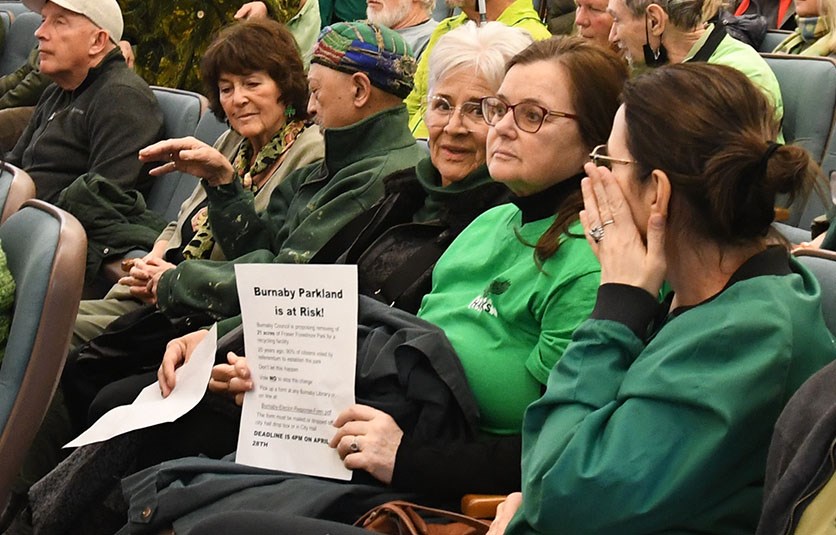
Environmentalists criticized the city for pitting climate progress against habitat preservation.
Residents also didn’t trust the “alternative approvals process” voting method, or AAP, chosen by the city to remove Fraser Foreshore’s park dedication.
According to city bylaw, because Fraser Foreshore was dedicated as parkland in perpetuity by a landslide yes vote in a 2005 referendum, Burnaby could only build GRO at the site if voters agreed to un-dedicate the park.
The city chose to use the AAP method because it is cheaper and quicker than a referendum, though the province advises municipalities to go to a referendum for controversial decisions.
Burnaby had never used an AAP before, and none of Burnaby’s neighbouring cities had used it to un-dedicate more than four acres of parkland to make way for development, according to a survey done by the Burnaby NOW.
The protest against GRO came to a head on March 13.
Dozens of opponents descended on Burnaby City Hall.
Dressed in green, they brought signs; some jeered and one resident showed up in an inflatable dinosaur costume.
Hurley continued to back GRO at the meeting.
Three days later, however, he called for a special re-vote on the project.
“Bold moves mean there will always be trade-offs, but they need to be trade-offs our community can support,” Hurley said in a statement.
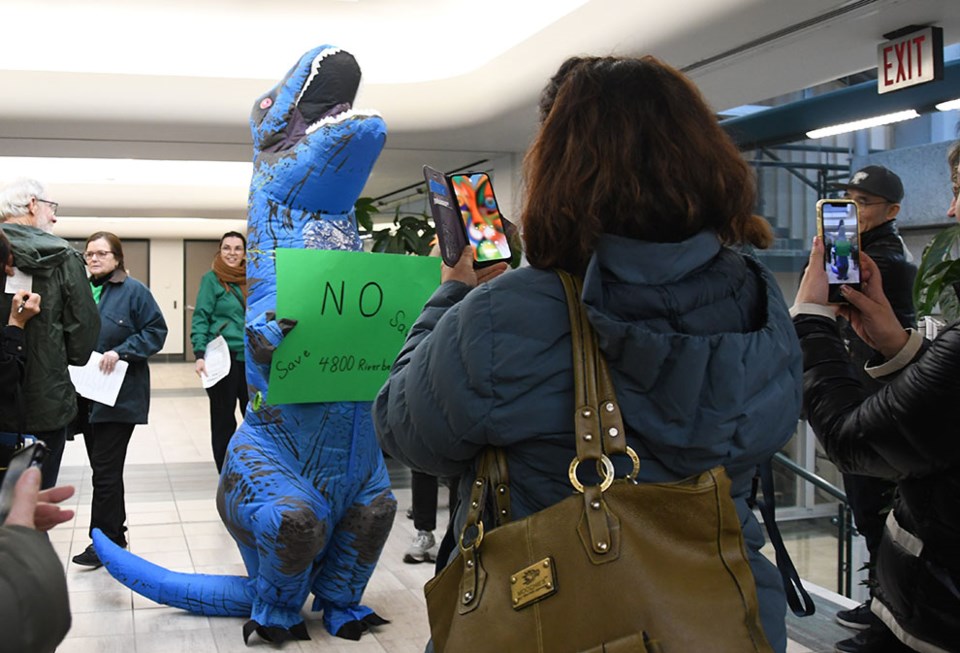
Council backpedals
Councillors spent almost an hour backtracking on their former support before finally killing the project in a re-vote on March 20.
During a press conference after the meeting, the mayor sidestepped the NOW’s questions about why the environmental value of the park had been omitted from the Feb. 6 public report to council.
Hurley said he had had access in January 2023 to the consultant’s environmental report that detailed Fraser Foreshore’s ecological importance.
But the city did not make the environmental report available to the general public until early March 2023.
“I think everyone was still aware that was (a) very ecological, sensitive area,” the mayor said of his fellow councillors, but he acknowledged council voted based on the public report received from staff.
He said he could not answer why the Feb. 6 report did not include information on Fraser Foreshore’s ecological significance.
‘Taken aback by the process’: Gu
Before the re-vote that killed the project, Gu posted a public blog explaining why she had changed her mind on the project.
She wrote she was “taken aback by the process” and said the information presented to council emphasized the park’s farmed and disturbed past, rather than its present state as scarce, rarely intact wetlands full of native species.
She said she didn’t have access to the environmental assessment, technical details “or even a fraction of the information I have now, which I have had to dig up, receive through residents with institutional knowledge, or know what to ask for and advocate that it be accessible.”
“I was also told that this land wasn’t nearly as valuable as I know it to be now.”
The GRO project is currently on hold as staff search for another site.
• • • • •
READ THE DOCUMENTS: The Burnaby NOW has compiled relevant files from the FOI package here, including the Environmental Review Committee’s decisions, meeting minutes, council reports and the 2004 report from when the city bought the lands at Fraser Foreshore Park. Click here to read
